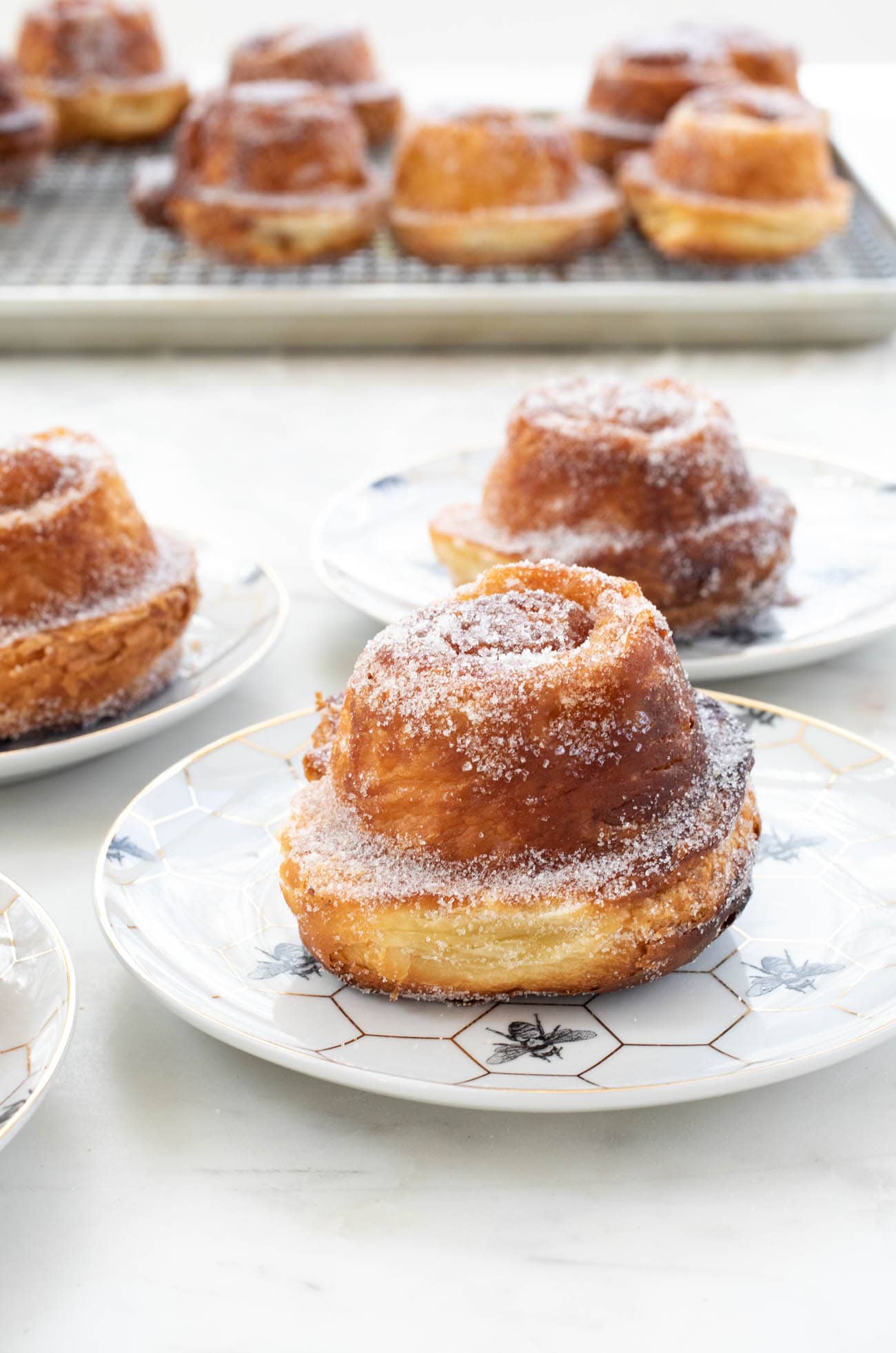
Of all the recipes I’ve developed between my cookbooks, working in bakeries, and this website, this Cheater Croissant Dough might be the one I spent the longest working on. It is one of my favorite recipes, as it gives everyone the chance to make and experience the magic of flaky, delicate croissants and so many other treats in a simplified, easier technique.
It wasn’t until I read Thomas Keller’s Bouchon Bakery that I accepted that home croissants were never going to be perfectly on par with bakery ones. He writes: “Croissant dough is the most difficult of the enriched doughs to get right…[y]ou can never master it completely. Every time you attempt it, it’s new. The temperature of your kitchen, the humidity in the air, the absorbency of the flour, the activity of the yeast – all these factors affect the dough.”
When I understood that this professional pastry chef who had made thousands of croissants could never master the croissant, I knew I had to take a different approach for my own kitchen. I wanted a dough that mimicked the flaky, butter layers of a croissant, but gave a little more space to imperfection.
This dough is inspired by many different recipes, but specifically Dominique Ansel’s croissant MasterClass and Mandy Lee’s laminated dough in her book The Art of Escapism Cooking. Mandy skips using the butter in a block, instead spreading room temperature butter over the surface of the dough, and then proceeds with the folding.
The results are still amazingly flaky, and it works great in many different recipes that I’ve developed using this dough. You’ll find a whole chapter of them in my 100 Morning Treats cookbook, from danishes to cruffins, and almond croissants to morning buns.
The Blue Heron Coffeehouse (where I learned to bake in college) graciously tested this recipe for me when I was creating it, and has been using this dough for several years now in their baked goods on a daily basis.
You can see some of the beautiful pastries they are making over on their Instagram page and in their Instagram stories.

What makes this a Cheater Croissant Dough? Is it puff pastry?
Croissant dough and puff pastry both are from the same family of laminated doughs. A laminated dough contains many layers: traditionally the dough is wrapped around a block of butter, then it is rolled out thin and folded several times. When the dough is baked, the water contained in the butter steams, and “puffs” the dough, creating layers that are light and flaky. While both puff pastry and croissant doughs are laminated, puff pastry does not include yeast and croissant dough does. The yeast gives the dough an even lighter texture. Croissant doughs also contain more sugar than puff pastry.
Step-by-Step Guide to Making Cheater Croissant Dough
Traditionally, croissant doughs have a butter block (or beurrage) encased in the center of the dough. For this cheater recipe, you’ll take the butter and spread it over the rolled-out dough, and then proceed with folding the dough (or turns). This helps the dough come together a little faster, and the dough rolls out beautifully. It makes a really delicious, flaky pastry.
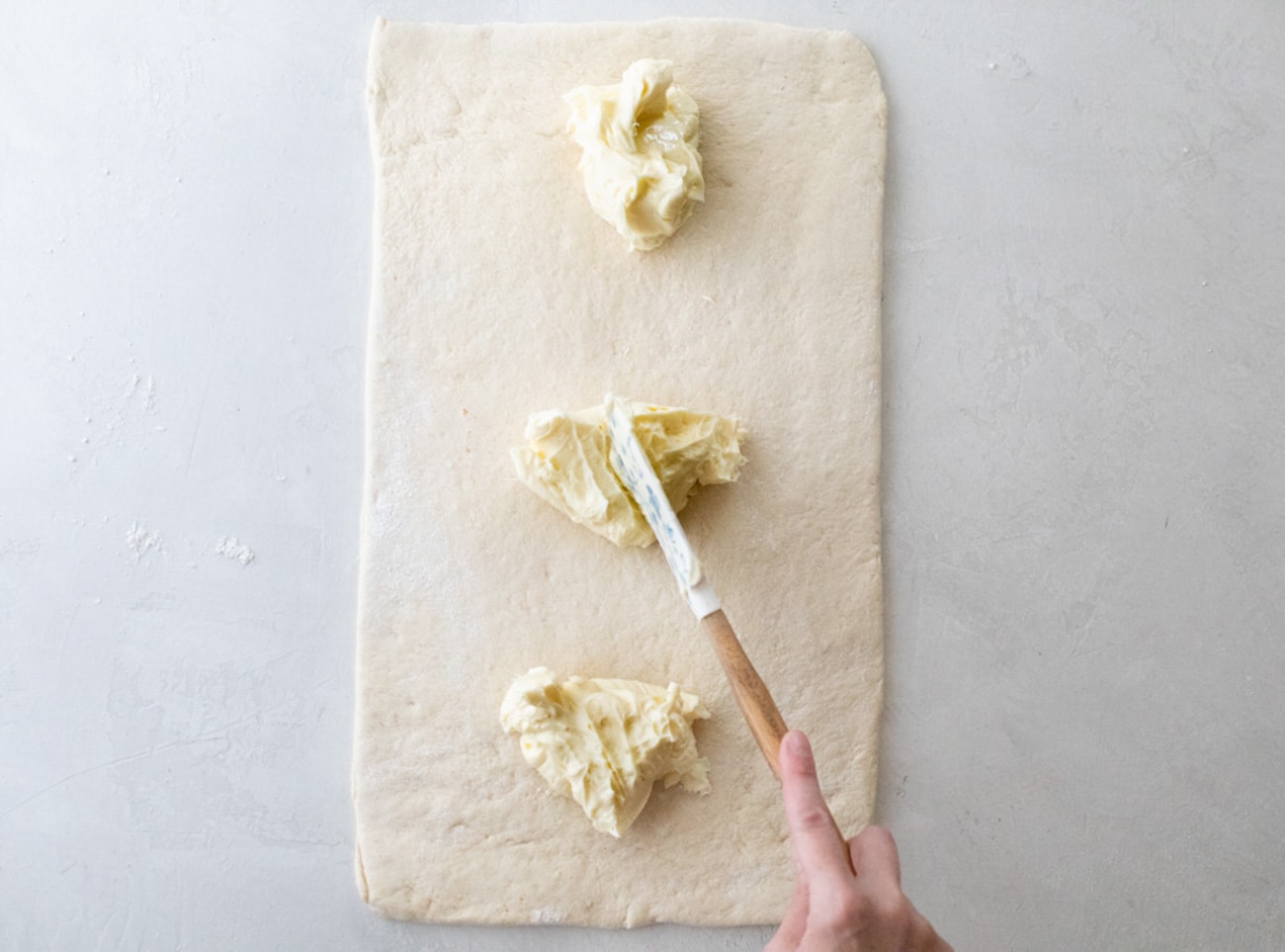
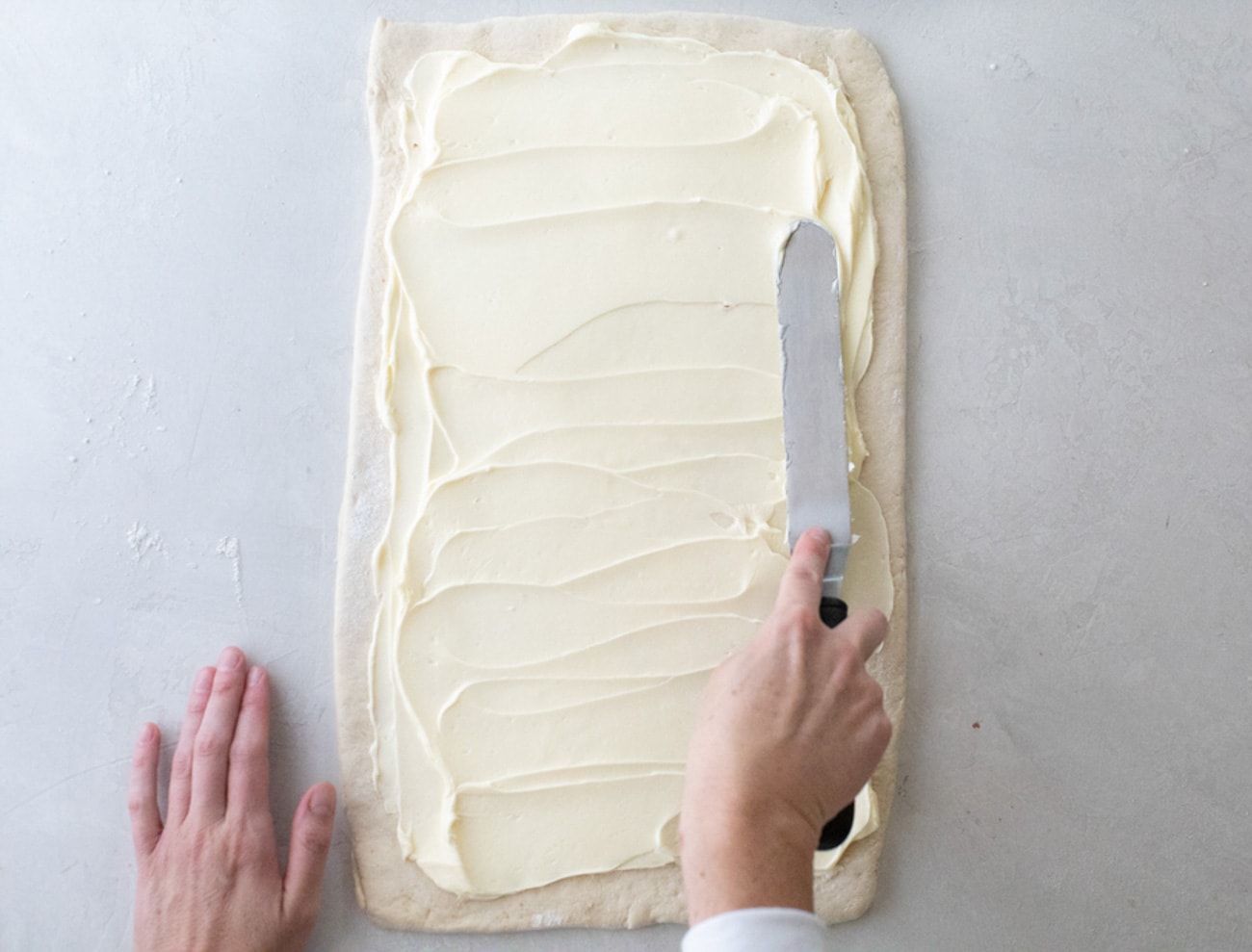
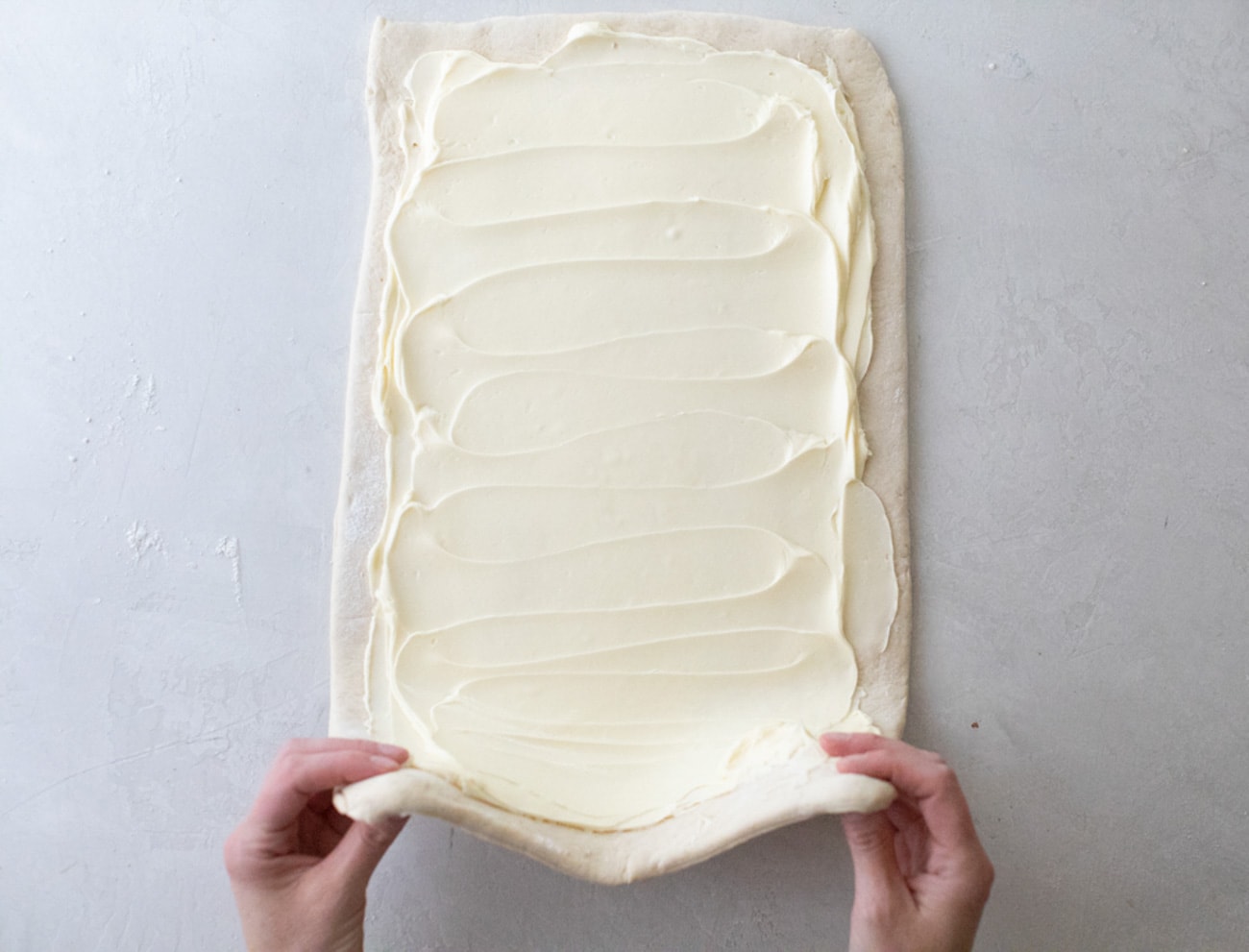
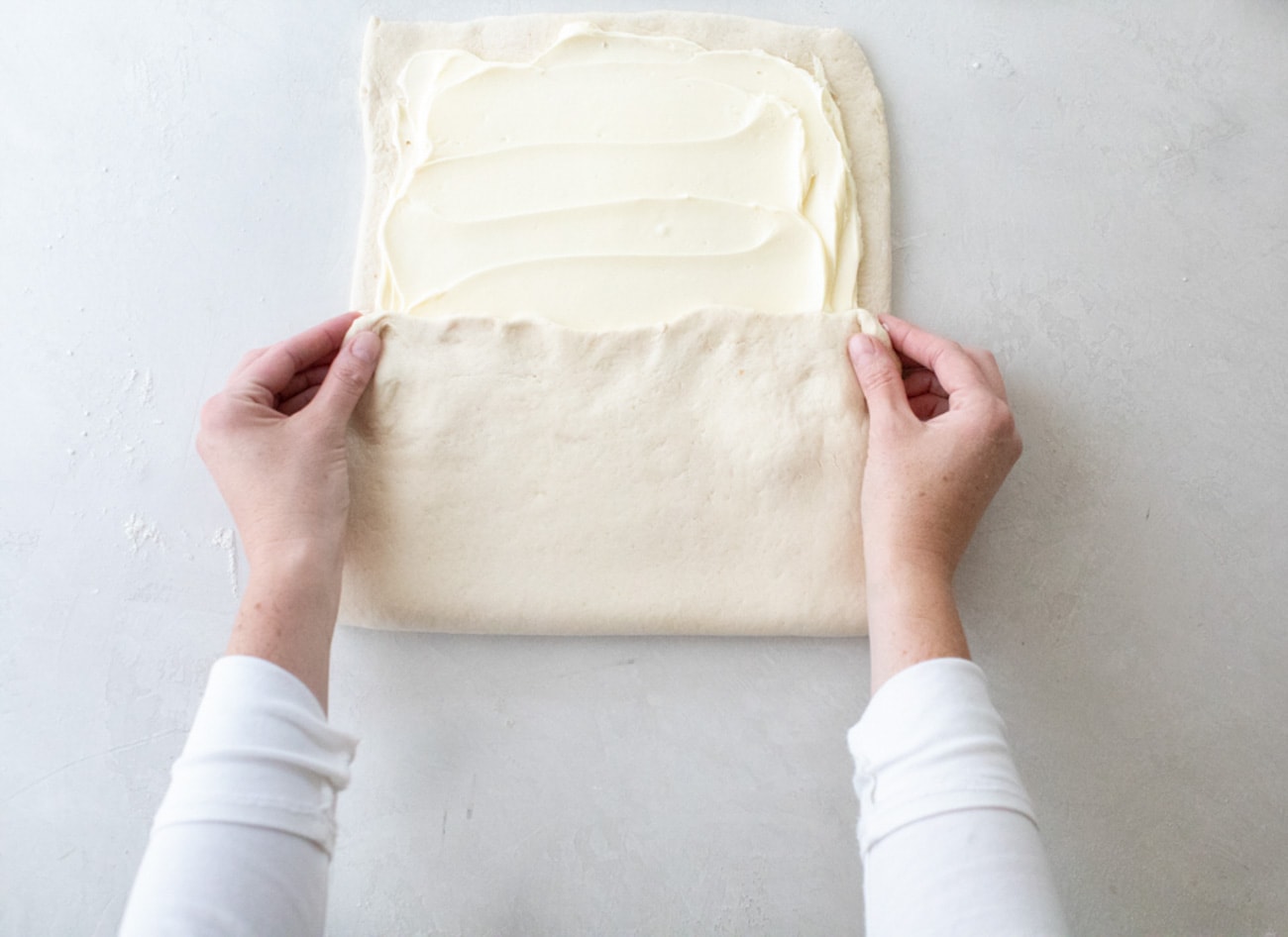
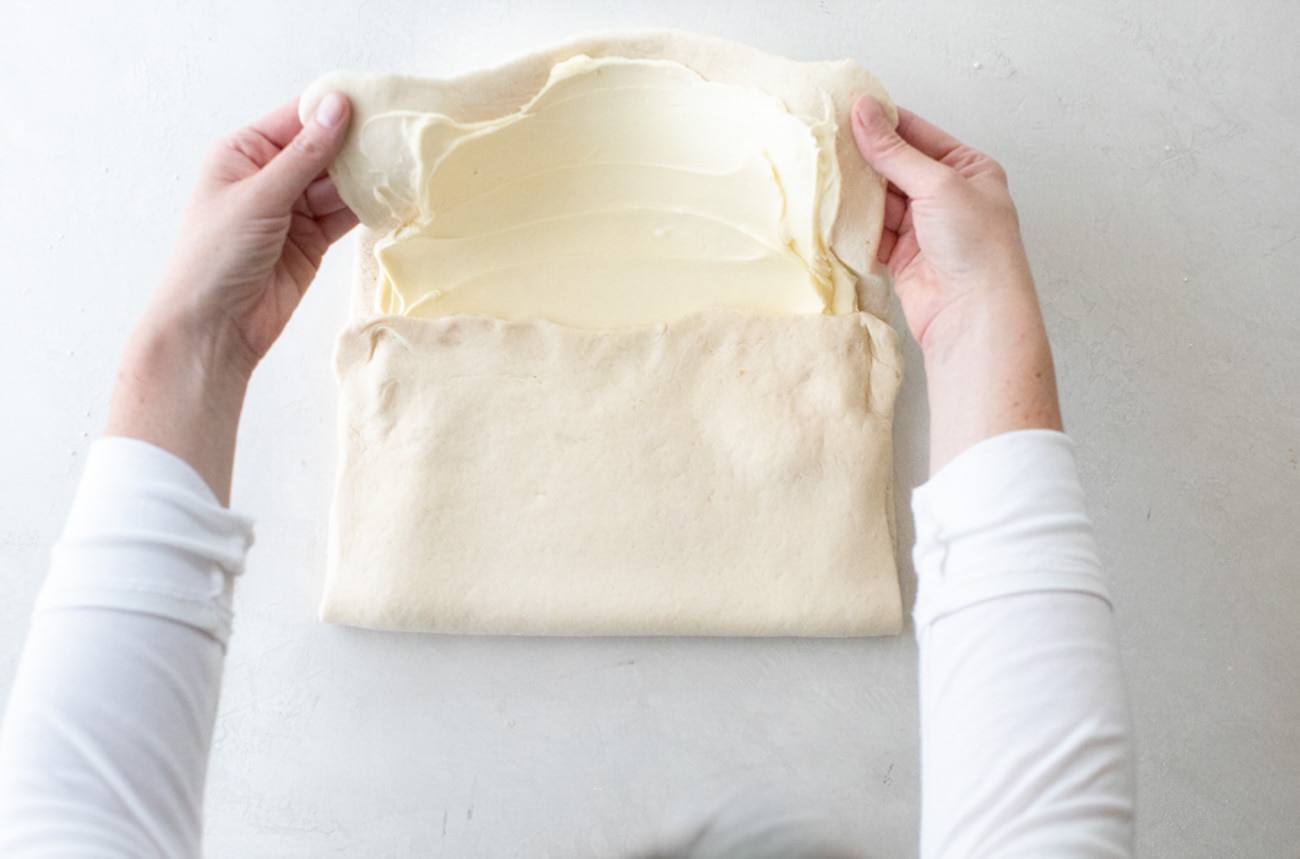
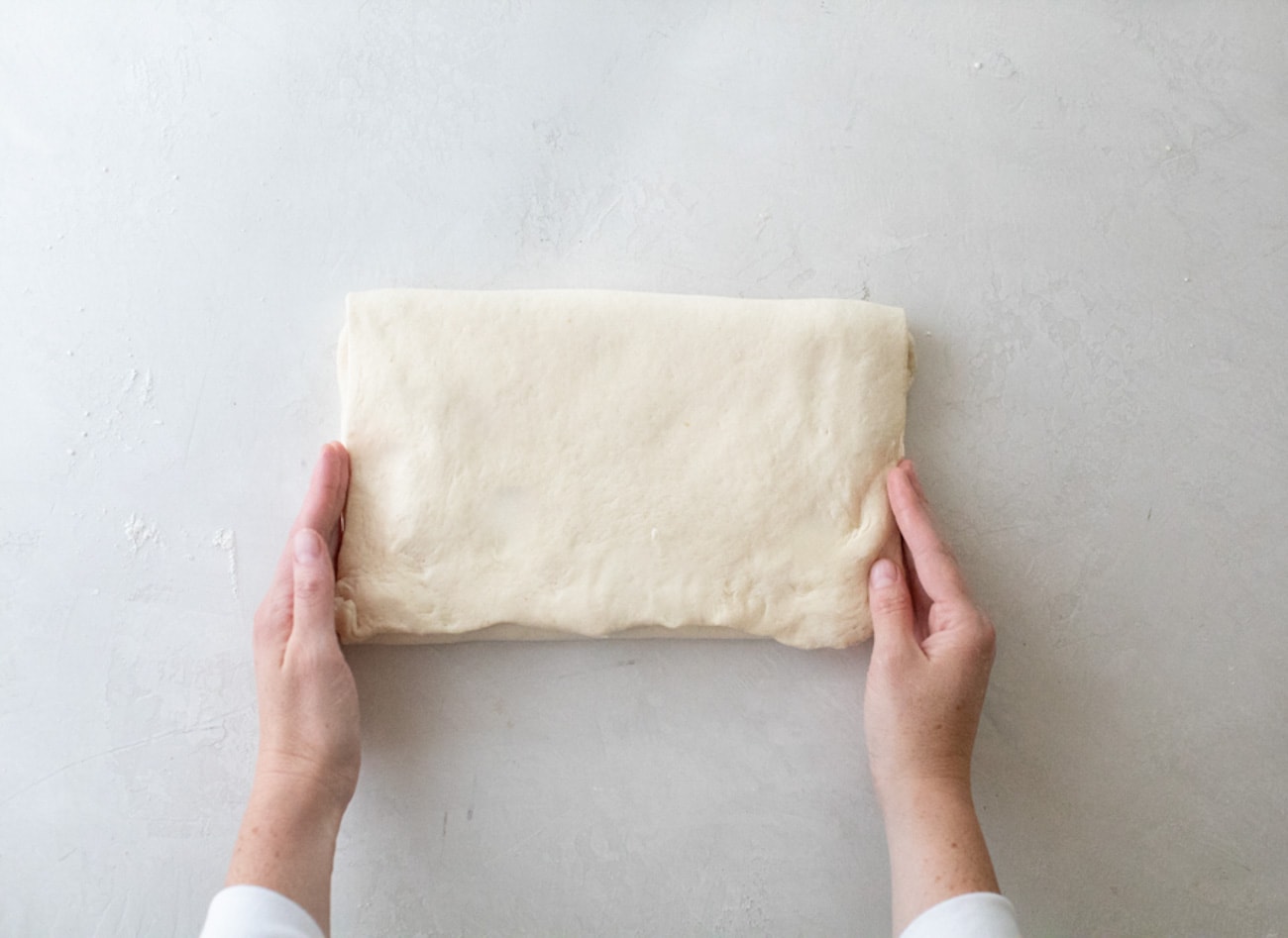
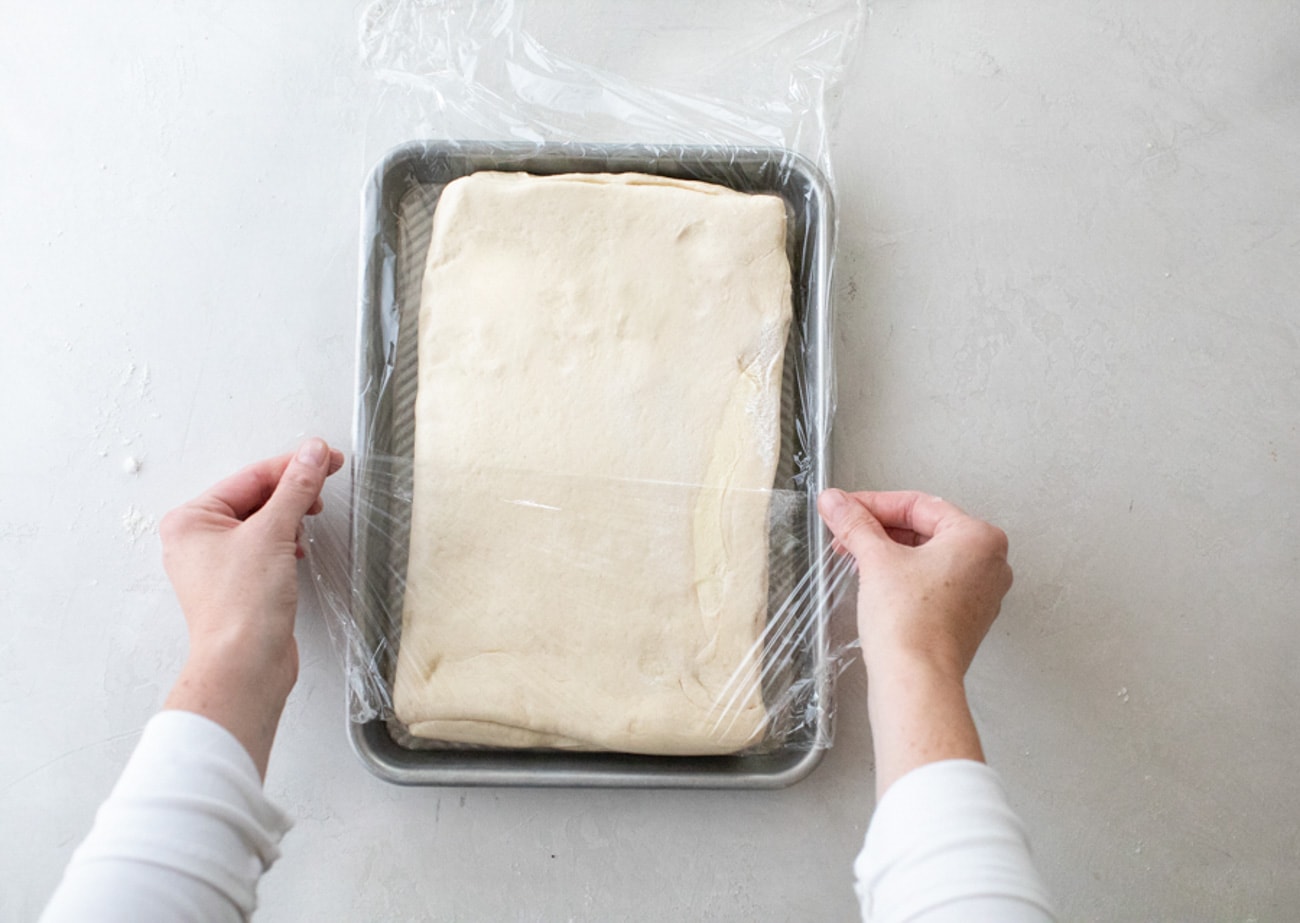
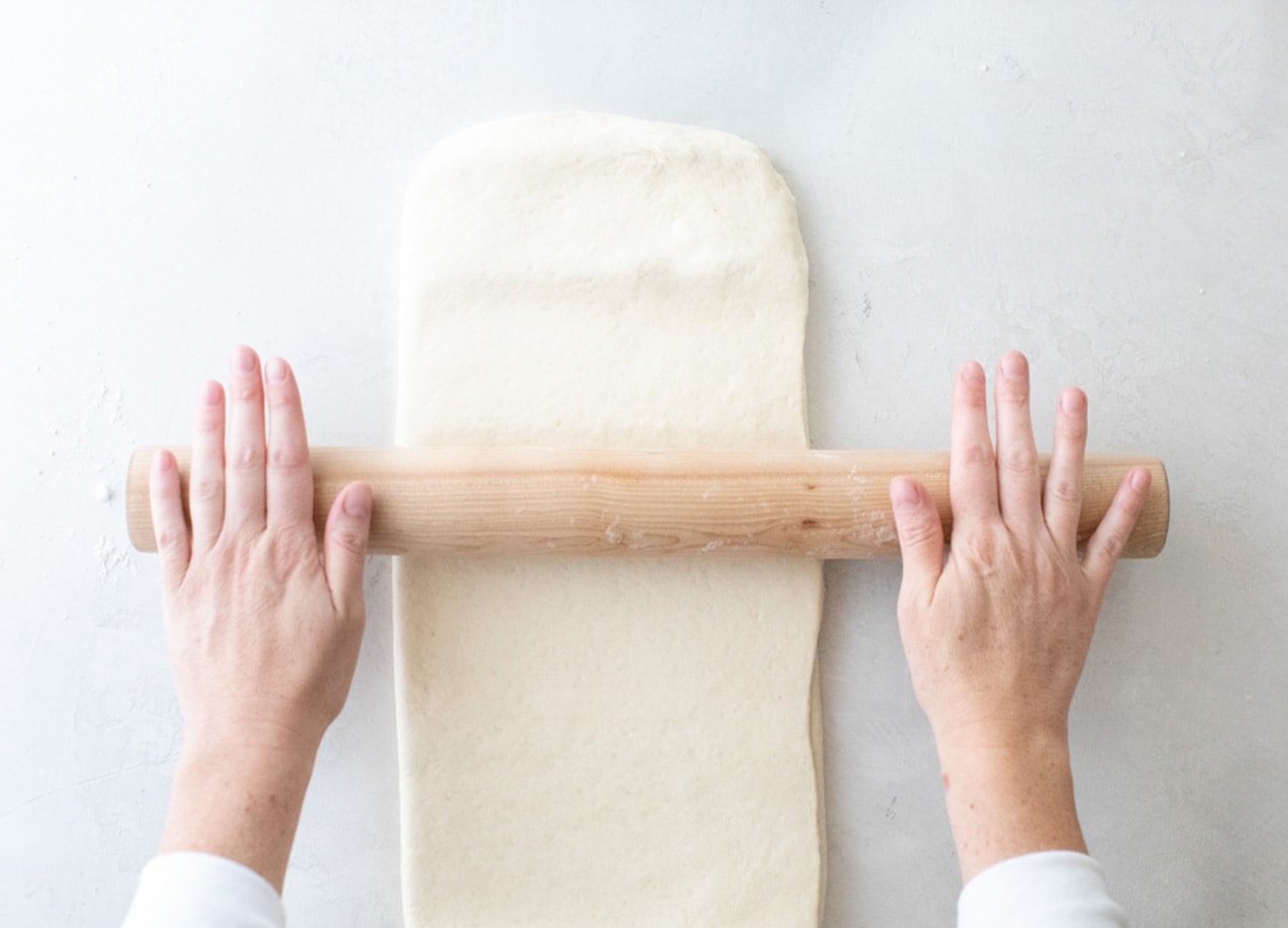
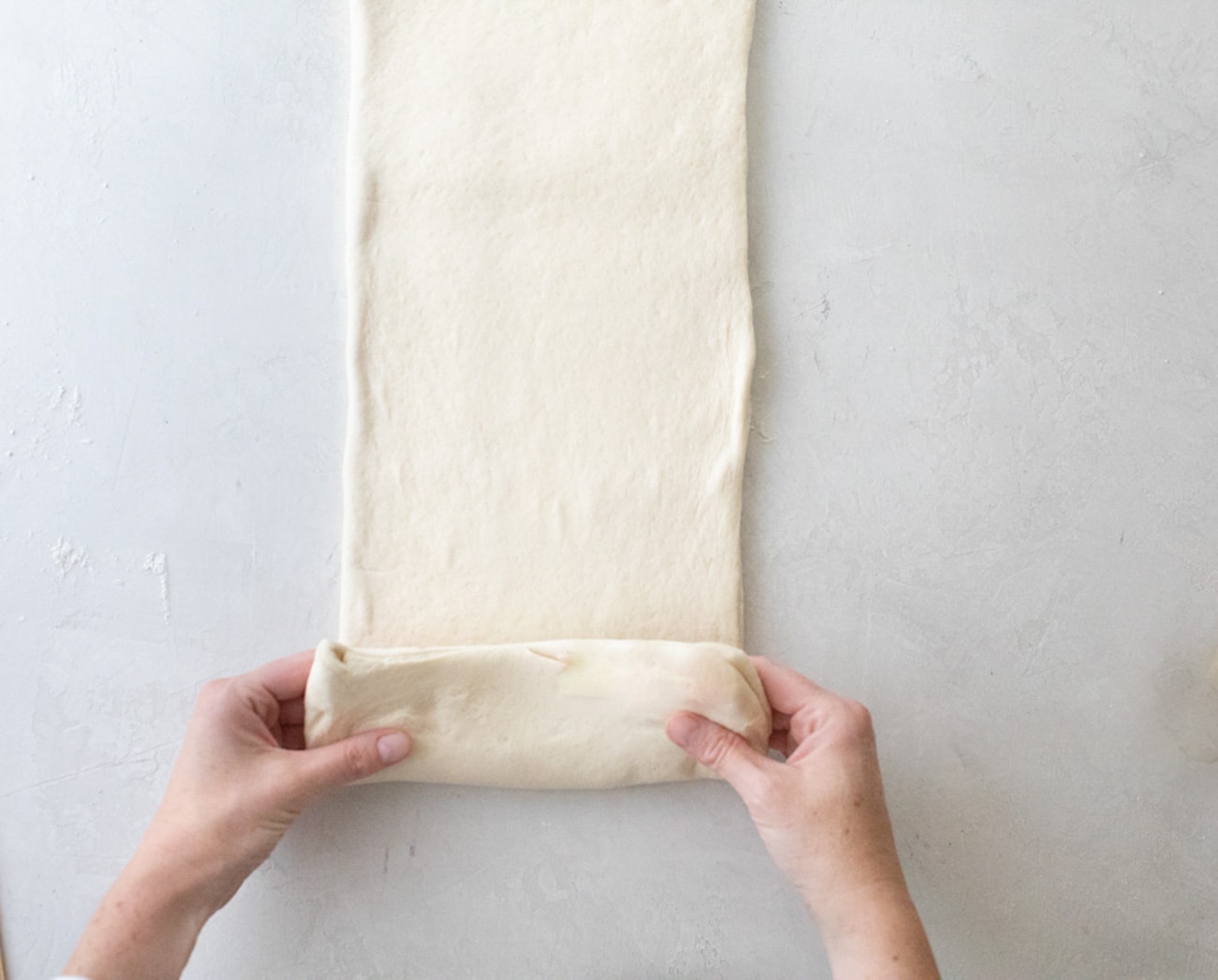
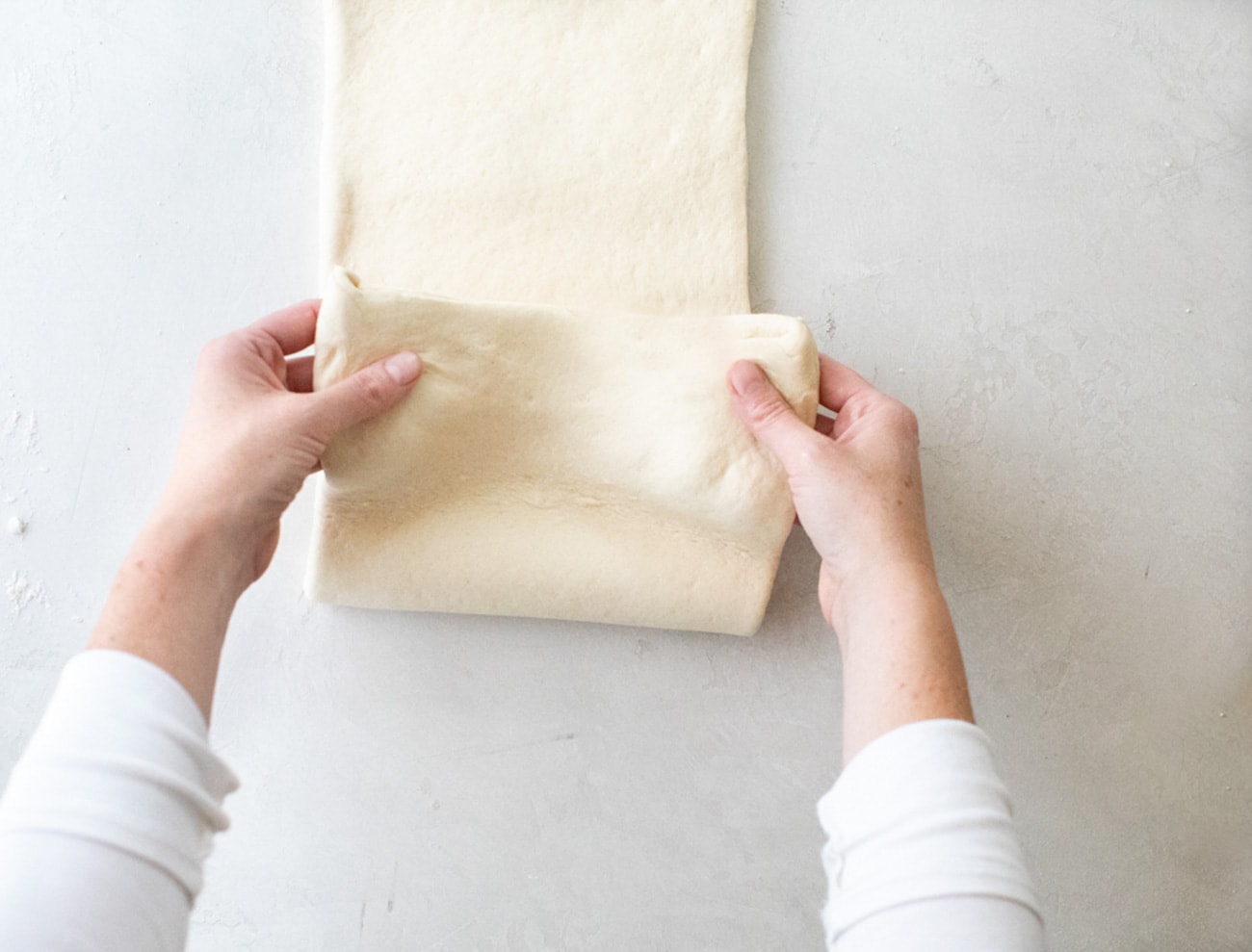
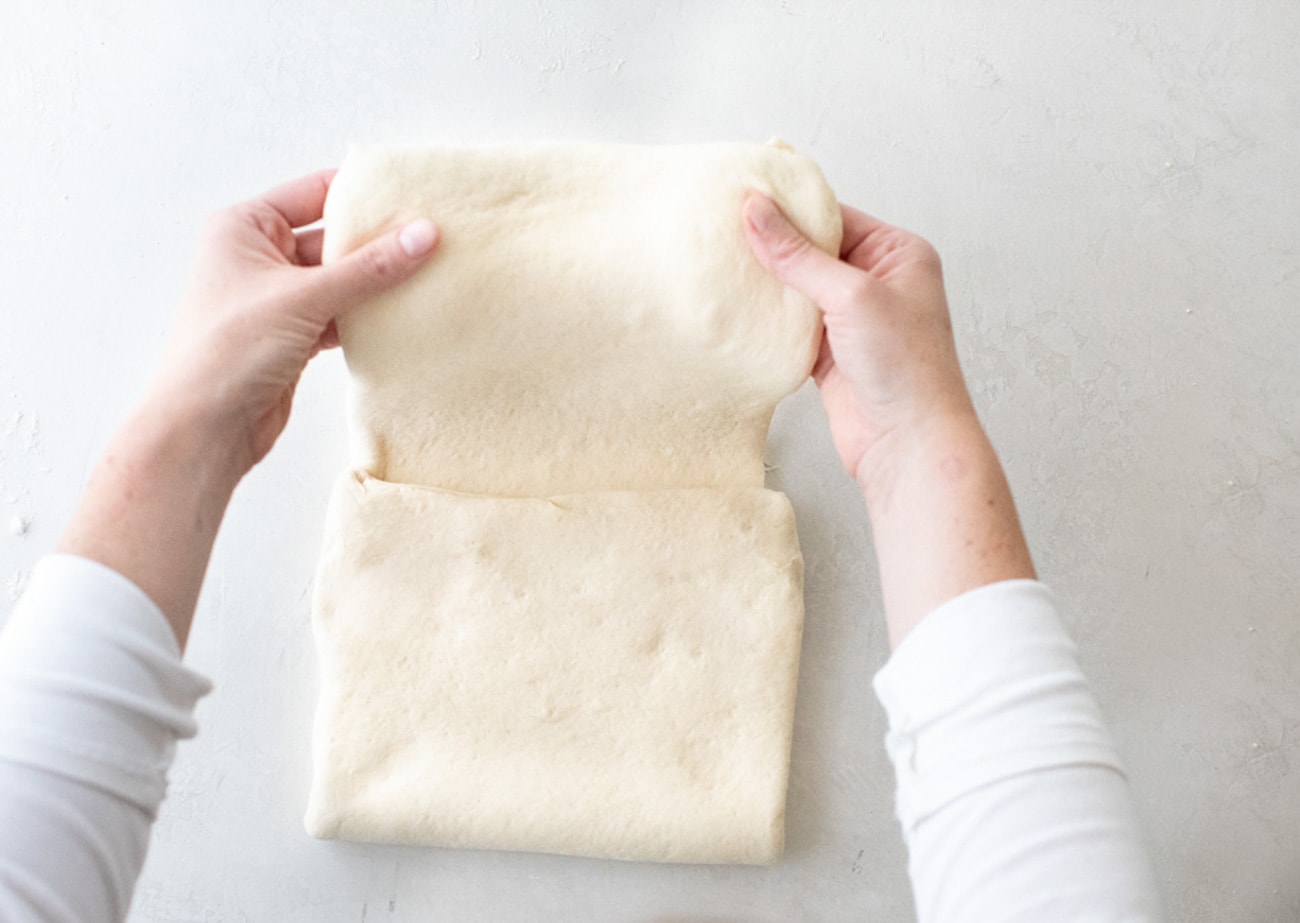
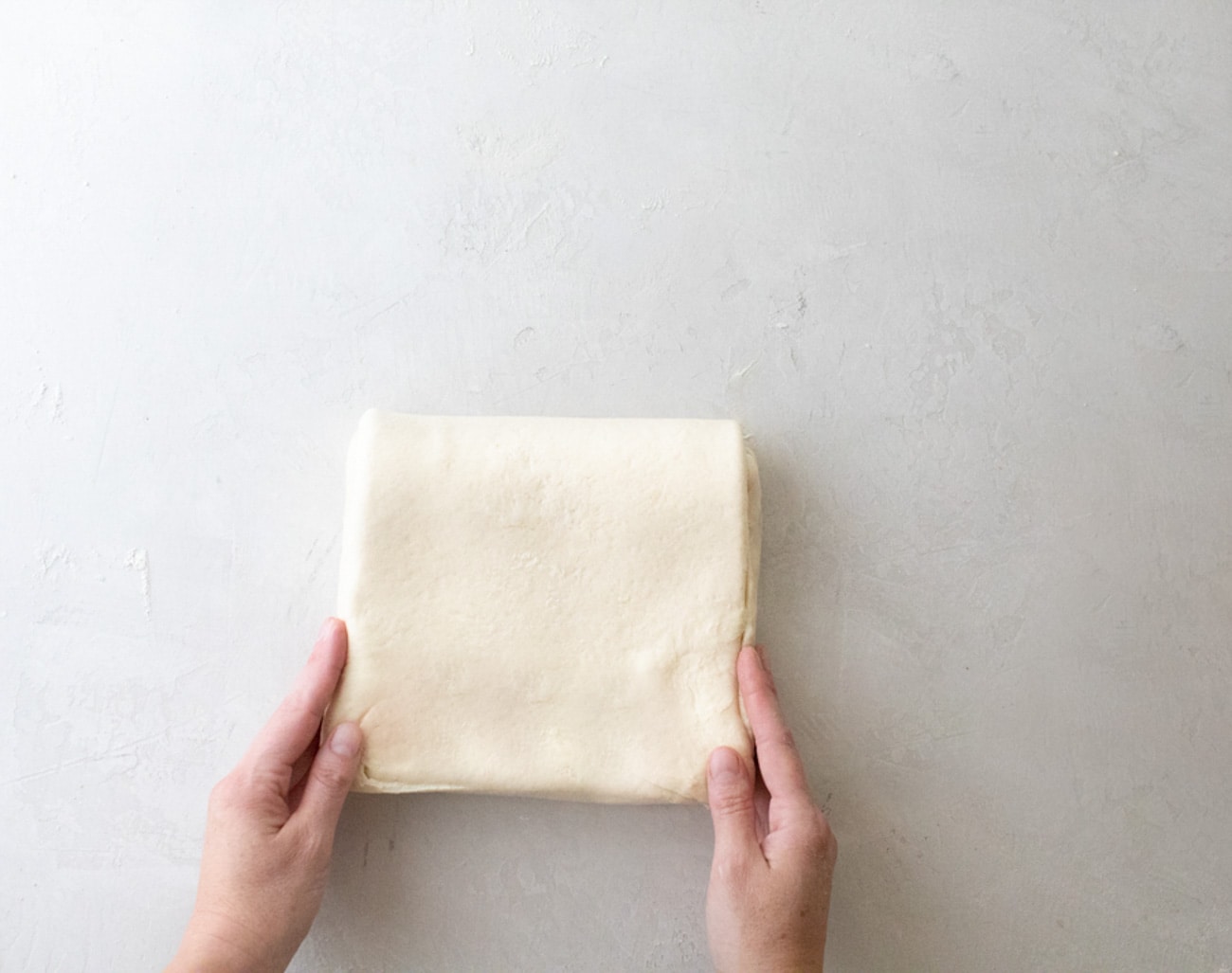
Using European-Style Butter to Make Croissant Dough
European-style butter, by law, contains a higher percentage of butterfat than “regular” or American butter, and also has a less water content. American butter melts faster due to the higher water content, which results in cracking easier when chilled. This can make the laminating process more difficult. European-style butter also has a creamier, richer taste, that is important in developing flavor in the dough. In a pinch, I have used American butter in this recipe and it works, but the dough is less rich, and after freezing did show signs of cracking.
Top 3 Tips for Working with this Dough
Make sure your kitchen isn’t too hot! This will affect how your dough rolls out. The yeast will began to release gas as the dough warms up, so a cool environment is important. If at any point your butter begins to melt or your dough begins to warm and stick to your work space, you can move the dough to the refrigerator to chill.
Practice is important: Read through the entire recipe once or twice, so you really understand all the steps. If you haven’t made this recipe or a laminated dough before, give yourself space to make mistakes. Practicing a few times before using this dough for an important event (brunch, holidays, etc) is a good idea. Mistakes are part of the process! We learn by making mistakes, so if your dough doesn’t turn out perfectly the first time, have patience with yourself.
Use the flour called for and use a kitchen scale to weigh ingredients. Flour is one of the most important building blocks in baking. Different brands of flour have varying levels of protein, which can result in very different outcomes in baking. When working with yeasted doughs, I like to use King Arthur flours, and use their all-purpose, unbleached flour in this recipe.


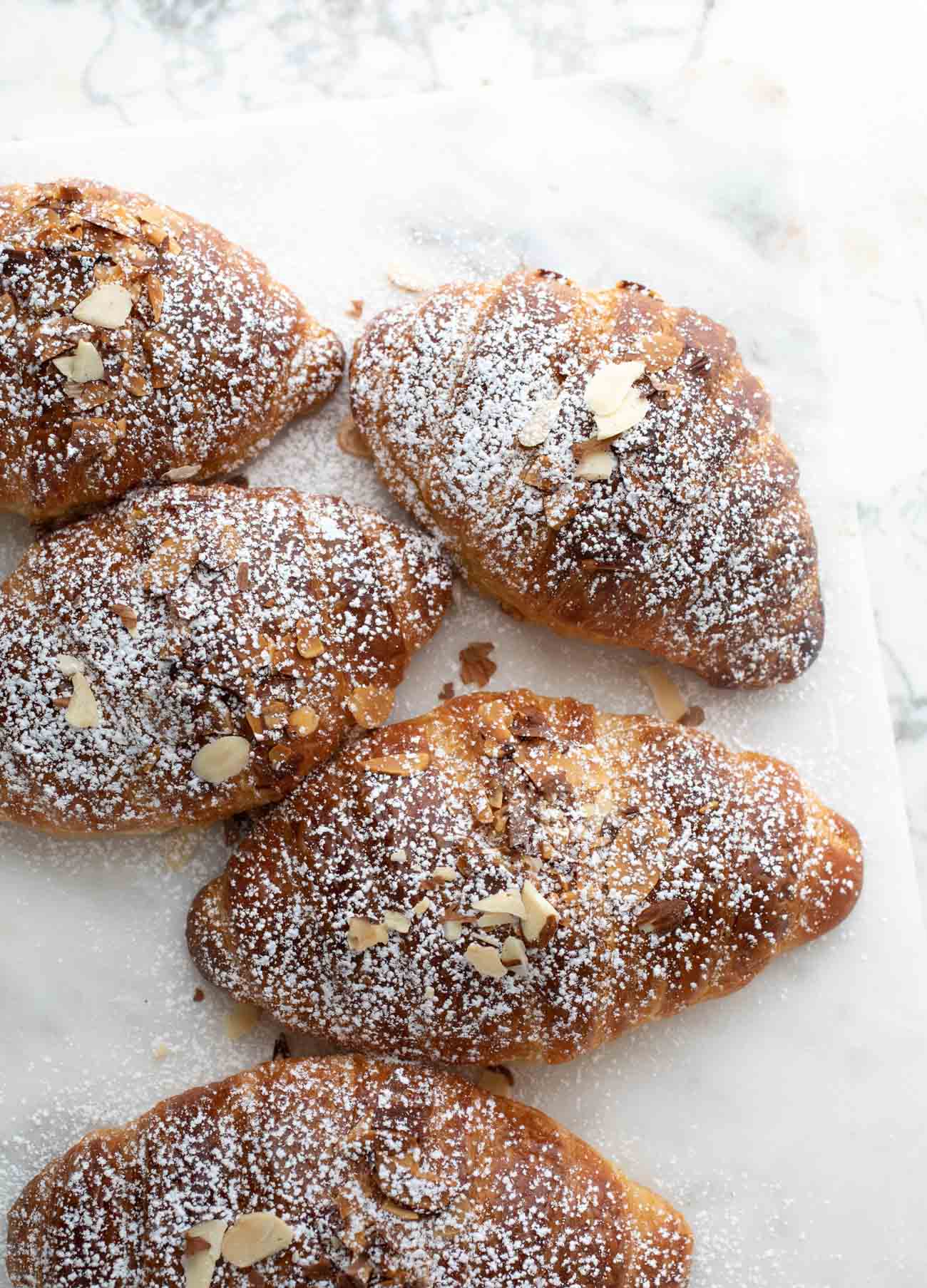

Foolproof Cheater Croissant Dough
Ingredients
- 1½ cups [360 g] warm water (100 to 110°F [35 to 42°C]
- 1 tablespoon plus 1 teaspoon active dry yeast
- 4 cups plus 1 tablespoon [577 g] all-purpose flour, plus more for dusting
- ¼ cup plus 1 tablespoon [65 g] granulated sugar
- 2 teaspoons salt
- 2 tablespoons unsalted butter, melted
- 1½ cups [3 sticks or 339 g] unsalted European butter (preferably 82 percent butterfat), at room temperature (68°F [20°C] and pliable
Instructions
- Grease a large bowl and set aside. In a small bowl or liquid measuring cup, stir together the water and yeast and let sit until dissolved, about 5 minutes.
- In the bowl of a stand mixer fitted with the hook, mix together 4 cups [568 g] of the flour, granulated sugar, and salt. Start the mixer on low speed and add the water-yeast mixture, followed by the melted butter. Continue to mix until all the ingredients are combined, 3 or 4 minutes (see notes). The dough will be rough and bumpy but should be in one piece. Move the dough to the large greased bowl and cover with plastic wrap. Let the dough rise at room temperature for 1½ to 2 hours, until doubled in size.
- Gently press down on the dough, releasing as much gas as possible. Place the dough on a large piece of plastic wrap and shape it into a 10 by 12 in [25 by 30.5 cm] rectangle. Cover the dough with more plastic wrap, place it on a sheet pan, and transfer it to the refrigerator for at least 2 hours and up to overnight.
- In the bowl of a stand mixer fitted with a paddle, beat the European butter and the remaining 1 tablespoon of flour together until creamy and combined, 2 to 3 minutes (see notes).
- Remove the dough from the refrigerator, unwrap it from the plastic, and place it on a lightly floured work surface. Roll the dough into a 12 by 20 in rectangle. Spread the entire rectangle evenly with the butter-flour mixture, leaving a ½ in [12 mm] border around the rectangle. Make the first turn, or letter fold: Starting with a short side facing you, fold one-third of the dough onto itself, making sure the edges are lined up with each other. Then fold the remaining one-third of dough on top of the side that has already been folded. Rotate the dough so the seam is facing to the right and one open end is facing you. Gently roll the dough into a 10 by 18 in [25 by 46 cm] rectangle. (Each time you roll, the rectangle will get a bit smaller.) Repeat the letter fold. Sprinkle flour on a sheet pan or plate, place the dough on it, and freeze the dough for 6 minutes—set a timer so you don’t forget (see notes; this helps cool the dough slightly and makes the last turn less messy).
- Remove the dough from the freezer and repeat the letter fold again, making sure the seam is facing to the right. Roll the dough again into a rectangle, about 8 by 16 in [20 by 40.5 cm]. Repeat the steps for one letter fold. Gently compress the dough with the rolling pin and, depending on the recipe you are using, keep the dough in one piece or cut the dough into two equal portions. If using the dough immediately, place the piece being used in the freezer for 6 minutes to chill, then proceed with the recipe. Otherwise, wrap the dough in plastic wrap, place it in a freezer safe bag, and freeze for up to 2 weeks. The dough can be removed from the freezer the night before using and placed in the refrigerator to thaw.
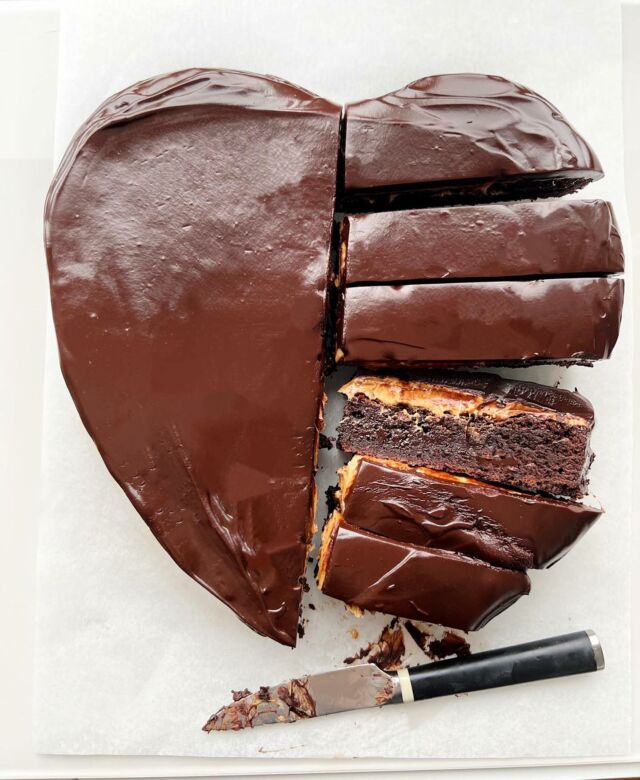
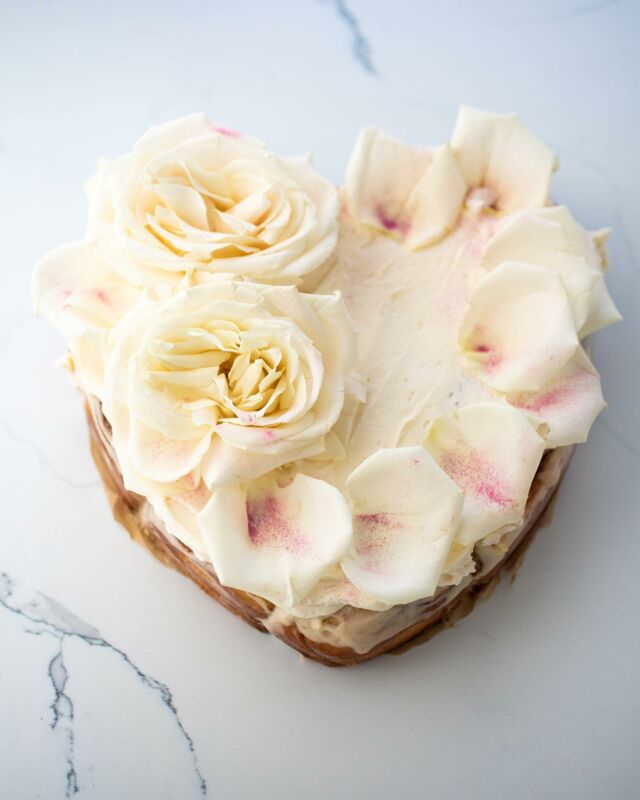


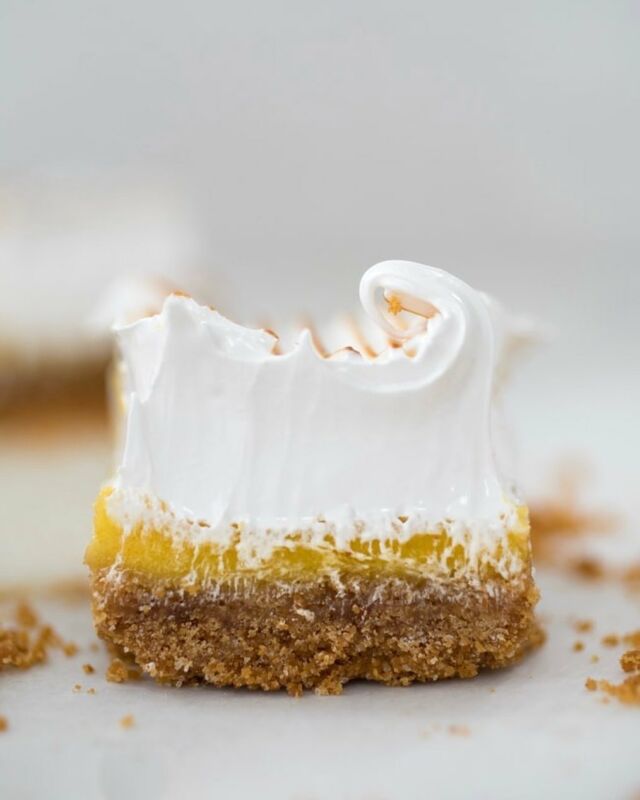
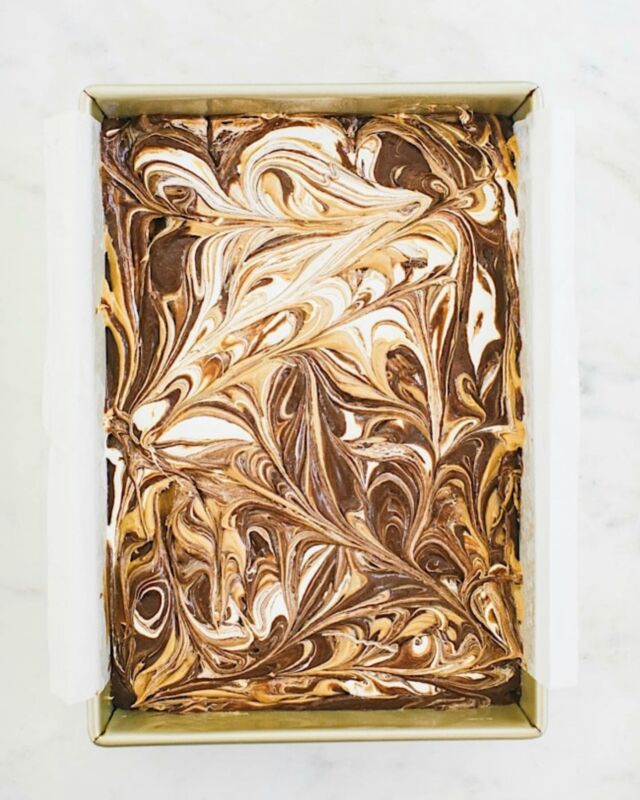

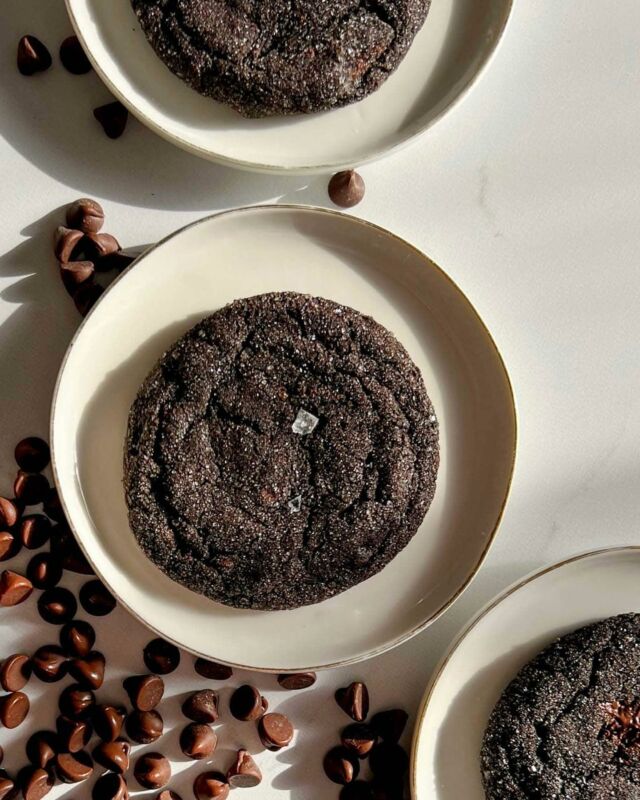

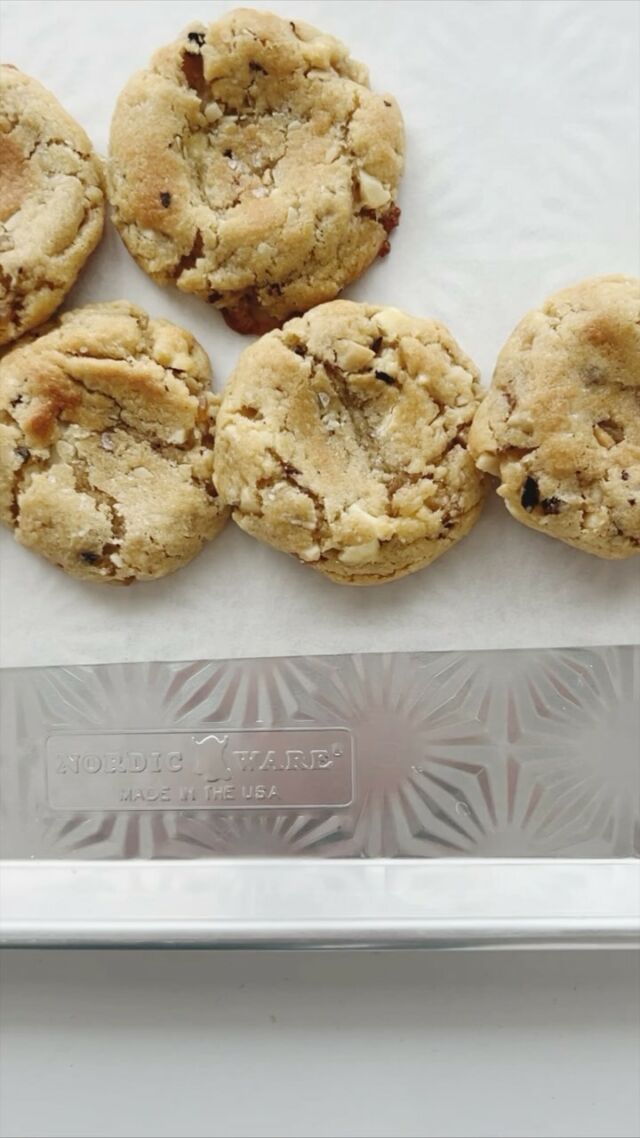

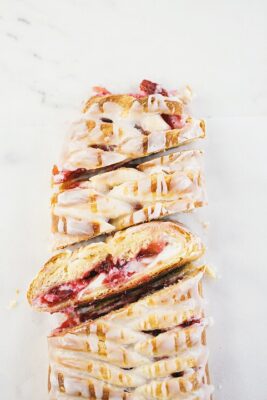


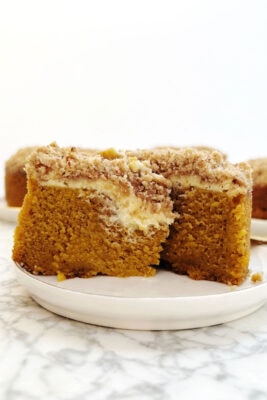
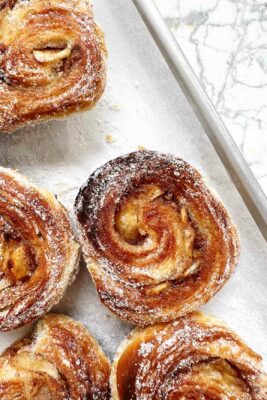
27 Comments
Linda D.
Sunday, March 30, 2025 at 10:03 amMy treats are rising now and I’m optimistic on this new method of lamination! I did 6 morning buns, 2 chocolate croissants, and 6 prociutto and romano/parm, excited to try rough puff as well from Morning Treats (and pretty much everything else). I was also confused about number of turns, wasn’t sure if I needed to do 3 turns or 4. I did 3, was that right?
Karen
Friday, March 7, 2025 at 11:35 amSarah
I have all of your books and I’m a huge fan! I love your recipes, and am working my way through the 100 Morning Treats.
Thank you for all you do for us fellow bakers
Gabriel
Thursday, March 6, 2025 at 3:57 pmYour pastries look delicious. Pierre Herme’s “Pâte à croissants”, book Le Larousse des Desserts, 2006 or possibly 1997, uses soft butter as well. I wonder if this is an older method now out of fashion. Thanks for posting and good tip about “perfect” home croissants.
Kristine Angelo
Wednesday, March 5, 2025 at 12:30 pmHi Sarah, do you think that I can successfully make these croissants using King Arthur Gluten Free Measure for Measure Flour? Hoping…!
amber
Friday, February 14, 2025 at 1:06 pmhello! do you have a recipe for the croissant muffins in the picture on this page?
Cindy
Saturday, November 9, 2024 at 11:11 amCan this dough be frozen? Thanks!
Ines
Saturday, October 5, 2024 at 2:24 pmHi, I will could you add powder milk or milk
Leah
Saturday, September 14, 2024 at 12:50 pmThis looks great! I just want to clarify that there are 4 series of folds total, and there is no rolling out flat between folds 2 and 3? Thank you!
Amber
Friday, February 14, 2025 at 4:47 pmI have this question too lol
Jill
Thursday, June 6, 2024 at 12:39 pmCan you eliminate the yeast and make puff pastry for palmieres?
Sarah Kieffer
Wednesday, July 10, 2024 at 9:00 pmHi Jill – no, just taking out the yeast won’t work here to make puff pastry. I do have a recipe for rough puff pastry in several of my books!
Kathy Schowe
Sunday, June 2, 2024 at 12:18 pmDo you use instant yeast? Or regular yeast? I’m looking forward to making these! Kathy
JaniceH
Sunday, May 19, 2024 at 2:31 pmI’m curious about your flour weights. I am making the almond poppy seed muffin recipe from your cookbook 100 breakfast treats and the flour weight seemed off to me so I came here to verify the flour weight you use for a cup of flour. In your blog you note that you use King Arthur Flour weights. But in this croissant recipe (as well as the muffin recipe in your cookbook) you use 140 gr per cup. King Arthur’s website has 120 gr per cup for AP flour. This isn’t huge for a small amount and I’m not trying to be critical or snarky, but I’m making a large quantity for a memorial service so want to make sure I get it right. Thanks so much,
Sarah Kieffer
Tuesday, May 21, 2024 at 9:52 amHi Janice – in all my recipes I use 142g of flour per cup. I don’t use KA weights for my recipes, but I do use their flour for my yeasted doughs. I use Gold Medal Flour for non-yeasted recipes.
Jennifer
Sunday, May 12, 2024 at 1:09 pmI did not find the cutting directions, the temp for oven and how long they should be baked. Maybe I missed it in this recipe but I’ve gone over a few times.
Anxious to try.
Sarah Kieffer
Tuesday, May 21, 2024 at 9:54 amHi Jennifer – this recipe is just for the dough itself, not for making croissants. I use this dough in a lot of recipes on my site (Morning Buns, etc).I have a recipe for making the croissants in my cookbook.
Millette
Friday, May 10, 2024 at 3:56 pmSo GREAT instructions. Thank you Sarah for this recipe as I often felt regular crossiant doughs intimidating,
Jen
Monday, April 22, 2024 at 2:36 pmCan I use bread flour in this recipe? If so, how much should I use?
Sarah Kieffer
Tuesday, April 23, 2024 at 9:45 amYou’ll need to use all purpose flour.
Jackie
Thursday, March 7, 2024 at 7:10 amIf we wanted to make crossaint with this how would we proceed? It just says proceed with recipe
Olivia
Saturday, December 16, 2023 at 12:20 pmcould you use this to make pain au chocolate?
Josie D
Friday, November 24, 2023 at 10:00 amI swear by EVERY recipe that Sarah has- but this one in particular is a new staple at home. I was not expecting croissants to turn out so good on my first try. My husband said they were the best he ever tried, and we even have some great French bakeries in our area. I used half of the recipe immediately for kouign-amann (8 muffin sized), and froze the other half to use a few days later for plain and chocolate croissants (15 medium sized). The dough froze and defrosted well! I froze it post lamination and rolled and shaped once defrosted. My only regret is not adding an egg wash to the croissants- they were matte rather than glossy.
Even though this is a “cheater” dough, I see no purpose in doing it any other way! Another 10/10 recipe, thanks Sarah!
Dorothy
Friday, October 20, 2023 at 3:13 pmMy dough looks smooth not rough and bumpy.
Claire
Monday, October 2, 2023 at 10:43 pmAmazing. As an English person living in Australia I tend to steer clear of American recipes as I find they often don’t translate well due to differences in ingredients etc. However, I couldn’t resist your book ‘100 morning treats’ and today I made croissants using your recipe. They are magnificent! Thank you for your clear instructions and a process that did not sound so intimidating that I didn’t want to give it a go. I will definitely be making them again.
Sarah Kieffer
Tuesday, October 3, 2023 at 8:26 amLove hearing this! Thank you for making the recipe and sharing your results.
MARTHA
Sunday, September 24, 2023 at 2:20 pmI live alone and would like to halv the recipe. Once croissants have been formed can they be frozen for future use?
This looks like a very easy recipe. Thank you for posting.
Renee M.
Tuesday, September 19, 2023 at 11:20 amNew favorite, Sarah! Troubleshooting question: what is happening when my pastry seems to “leak” butter while baking? Is this normal or should I fix something? Thanks!